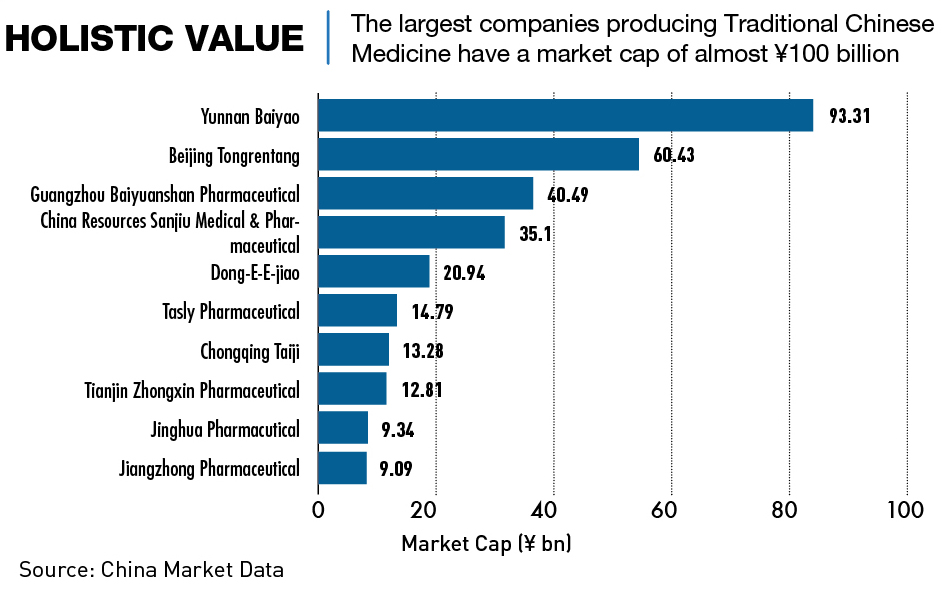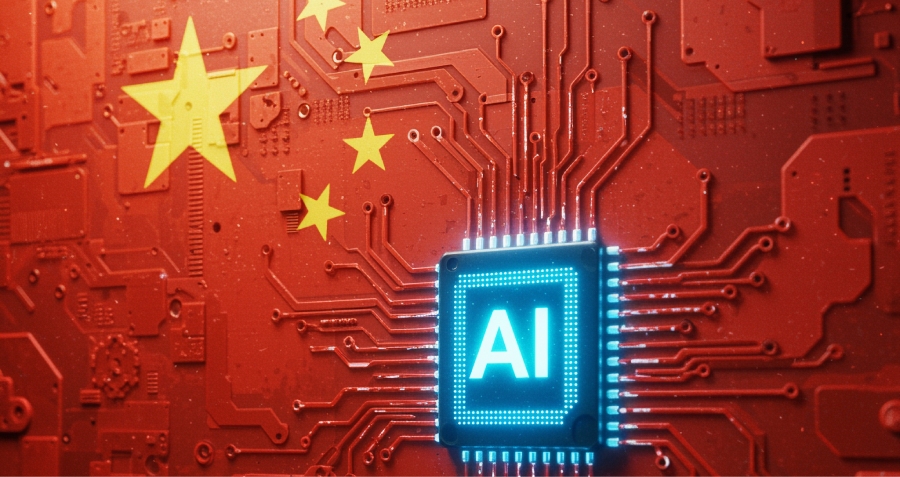Living longer is desirable, but maintaining your quality of life is just as important and many Chinese are trying to do just that
As the sun rises over a park in the Chinese city of Nanjing, octogenarian Liang Wei performs his morning Tai Chi and muses, “When I was young, the notion of aging scarcely crossed my mind. Today, I wish for nothing more than to live healthily for as long as possible and I think there are more and more ways to do that.”
Over the past few decades, the human endeavor in medicine has seen astounding advancements, incrementally nudging the average human lifespan closer to the century mark. There are now more than half a million people aged 100 or older around the world, compared to around 110,000 in 1990, and the number of people aged 80 or older is expected to triple over the next 30 years, reaching a massive 426 million.
But the modern era comes with an increasing number of mental and physical health-related difficulties, so while growing old is one thing, doing so while maintaining a high quality of life is another. Traditionally, Chinese people have been known for their hard-working nature, and while this hasn’t changed, there is a growing movement of people in the country looking to increasingly include physical and mental wellbeing to their priorities in life.
“Scientists are guessing that humans have a longest potential lifespan of 150 years and are working on achieving that through further research,” says Hui Zhang, professor of preventive medicine of the Feinberg School of Medicine at Northwestern University. “But when we talk about longevity, we should look at the reasons behind why we want to achieve human longevity, which shouldn’t be associated with a loss in quality of life.”
What do we live for?
Trying to understand the meaning of life has been the pursuit of philosophers for millennia, and there have been a number of different answers proposed, from long articulate essays to simple one line mantras. But there has never been a definitive answer, and there likely never will be.
Given this, personal motivations play a huge role in defining our lives. For Chinese citizens, these motivations have historically been work-related, and people in the country have developed a well-justified reputation for being hardworking. But there is now a growing awareness that lifestyle and a better work-life balance can affect how you feel, which in the longer-term leads to a better quality of life.
“For me personally, having zero work is as painful as having too much, so I still believe work-life balance is important to maintaining a healthy lifestyle,” says Alex Wang, a 29-year old from Chengdu who works in finance. “But I do find it crucial to be part of at least one community outside of work, whether that be a common interest or hobby, as it helps to combat negative feelings and boost mental health.”
And it is not just physical wellbeing that is coming to the fore. “To me, a good level of physical and mental health are the foundations of being a human,” says Minmin Xu, an office worker in Shanghai. “You can’t really do anything without a body that works, and a strong and positive mind can help in all aspects of your life, including personal and professional areas. It’s especially important to set up a good foundation now, so that as you age you can maintain it.”
Although these priorities are not new to China—the country has years of holistic practice using Traditional Chinese Medicine (TCM), which seeks to maintain a balance between mental and physical wellbeing—their recent return to prominence has had an impact.
A lifestyle shift towards a more quality of life-oriented approach to health and wellbeing in China is underway, utilizing a combination of health and wellness-focused lifestyle, science-based medicine and TCM.
“The focus is shifting from just physical health to a more holistic view that includes mental, emotional and social well-being,” says Fifi Kao, founder of SpaChina, a Shanghai-based health and wellness media organization.
The Fountain of Youth
Driven primarily by the expanding middle class and the shifting priorities of younger generations, China has seen a massive boom in health and wellness-related products and services that have sprung up to cater to the needs of a growing number of customers who wish to target these issues.
“People are looking for greater value from their purchases in the wake of COVID,” says Grace Wu, general manager of Le Bonta Wellness, and spa and wellness consultant. “Monetary value of products is one thing, but there now also has to be a practical, emotional or even spiritual value attached to something in order for the purchase to be justified.”
Individuals with access to more disposable income are increasingly seeking ways to enhance their quality of life, and the market has responded with a wide range of innovative products and services designed to promote health and well-being. This has led to China’s health and wellness industry now being valued at $683 billion, making it the second-largest such market in the world behind the US, which is valued at around $1.2 trillion.
“The Chinese, especially the younger generations, are showing a greater interest in health and wellness as a lifestyle choice,” says Kao. “People are becoming more conscious of the importance of preventive health measures rather than solely relying on medicine to treat illnesses. They are realizing that adopting a healthy lifestyle can help prevent various health problems and lead to a better quality of life.”
There are many health and wellness startups in China which offer a variety of solutions to cater to the growing demand for a healthier lifestyle. Fitness apps and wearable devices, such as Xiaomi’s Smart Band series of watches, enable individuals to track their physical activity, sleep patterns and other health-related metrics, empowering them to make informed decisions about their well-being.
Fashion brands are also getting in on the act, offering a wide range of products and services, including activewear and athleisure made from eco-friendly materials, organic beauty products and even mindfulness and meditation tools.
There has also been a rise in health and wellness-motivated tourism, offering packages for wellness retreats providing opportunities for relaxation, mindfulness and self-care, and allowing individuals to recharge and rejuvenate both physically and mentally. Additionally, herbal supplements derived from TCM principles are gaining popularity as natural remedies to support overall health and vitality.
One of the main drivers behind the health and wellness trend has been the rise of social media. Influencers and celebrities sharing their fitness routines, healthy eating habits and overall wellness practices have helped create an image of staying healthy as aspirational. “As with many social media trends around the world, the effect on younger generations has been quite pronounced,” says Kao.
The scientific approach
While the health and wellness trend is set to continue as people search for a better quality of life, there are also widespread medical issues in China that need to be dealt with and which simply can’t be cured by a lifestyle shift.
“When we talk about longevity, we should examine the reasons behind longer lifespans,” says Zhang. “The main cause of death, currently, are diseases such as cardiovascular issues and cancer, so to enhance lifespans, we either have to cure or slow down these diseases, use predictive technology to help us prevent them, or use human interference and artificially extend the development of human life.”
One major disease affecting life quality and length around the world is cancer, but the problem is particularly acute in China due to its large population size and high pollution levels. There are around five people dying from some type of cancer every minute across the country, and for some cancers, such as gastric cancer, hepatocellular carcinoma and esophageal cancer, over half of the global cancer burden is diagnosed in patients from China.
While the statistics are alarming, China’s progress in meeting R&D goals for oncology has been rapid, evidenced in part by the wave of new biotech companies in the country. In 2021, China had 14 medical firms—out of 350 representatives—on the prestigious Forbes Global 2000 company rankings, which contains the top 2,000 companies in the world across all industries, up from zero when the list was first compiled in the year 2000. While the country trails the US, which had 31 medical companies on the list in 2021, it now sits in second place.
Chinese biotechs are also leading in IPO fundraising—seven out of the world’s top ten largest biopharma IPOs from 2018 to 2020 were in China, according to global management consultancy McKinsey. BeiGene, a leading biotechnology firm listed on both the NASDAQ and in Shanghai, focuses on developing and commercializing innovative cancer treatments, with a pipeline of targeted therapies and immunotherapies.

McKinsey also points out that China’s work in cell therapy is also helping drive its oncological goals. In 2021, the National Medical Products Administration (NMPA) in China approved the first CAR-T cell therapy for the treatment of an aggressive form of blood cell cancer, marking a breakthrough in the field of personalized medicine. This groundbreaking therapy, which modifies a patient’s own immune cells to attack cancer cells, has shown promising results and is being further explored for other types of cancer.
“Stem cell research can theoretically help cells rejuvenate,” says Doris Rathgeber, the founder, general manager and medical director of Body & Soul, a group of Traditional Chinese Medicine (TCM) clinics in Shanghai. “They can be coaxed into becoming induced Pluripotent Stem (iPS) cells somewhat mimicking Embryonic stem (ES) cells—which are found in human embryos.”
China has seen the establishment of approximately 100 stem-cell banks, and around 10 stem-cell drugs are currently undergoing the approval process. But although the National Natural Science Foundation of China allocated roughly $576 million to 8,050 stem cell programs between 1997 and 2019, funding still lags behind countries like the US—where, since 2009, funding for all types of stem cell research was $5.44 billion.
The integration of AI and digital technologies is also revolutionizing healthcare delivery, paving the way for improved quality of life and extended longevity. AI-powered diagnostic tools enhance disease detection accuracy and efficiency, enabling earlier intervention and better treatment outcomes. Machine learning algorithms analyze vast amounts of medical data to identify patterns and predict disease progression, aiding in personalized medicine and proactive care.
A novel example of China’s healthcare system in action is BoAo Lecheng in China’s Hainan Province. The area is a pilot zone containing, as of 2023, 26 different medical institutions, and there are another 20 under construction. The area has special licensing rules that allow for the use of FDA or clinical evaluation (CE) approved pharmaceuticals in the area after short approval periods.
While it is not technically a resort, it serves as a one-stop-shop for various medical treatments and customers can utilize the hotels in the area in order to address all of their medical needs at one time.
Yin and Yang
Something that makes China’s healthcare industry different from that of the rest of the world is the intertwining of preventive health measures and alternative treatments with science-based medicine, and traditional Chinese medicine is returning to prominence in the country.

“In China, healthcare has never been merely about treating diseases,” says Rathgeber. “It’s a multi-faceted system aimed at overall well-being.”
While there is some well-founded skepticism as to whether many of the herbal remedies proposed within TCM are effective—some have even been proven to be dangerous to health—some of the treatments used, such as acupuncture and Tai Chi have been shown to improve patients’ quality of life and act as effective complimentary treatments to science-based medicine.
“TCM and Western medicine should be used together,” says Yuhyeu Lai, a doctor at Nanjing Yunhetai TCM Clinic. “The essence of TCM lies in its aim to harmonize the body’s systems, fostering health and resilience.”
The country’s dynamic biotechnology and pharmaceutical industries co-exist symbiotically with TCM, and the intertwining of these contrasting medical systems often result in patients receiving treatments from both realms for the same ailment.
“Western medicine is particularly effective in quickly managing acute conditions such as strokes, heart attacks and trauma, which can be more challenging for TCM,” says Lai. “On the other hand, TCM, including practices like acupuncture, bone setting and moxibustion, can contribute to recovery and rehabilitation efforts.”
TCM is also used in an attempt to curb the lifestyle factors that lead to ill-health in the first place. “Preventive care, a fundamental principle of TCM, goes beyond simple disease avoidance,” explains Rathgeber. “It involves lifestyle adaptations promoting holistic health.” TCM emphasizes the importance of balancing the body and mind, addressing the root causes of imbalances, and maintaining overall well-being rather than solely focusing on treating specific ailments.
While TCM has its unique characteristics, similar practices can be found in other cultures and traditional medicine systems around the world. For example, Ayurveda in India and Naturopathy in the West also prioritize holistic approaches to health, emphasizing the interconnectedness of the body, mind and environment.
However, what sets TCM apart is its integration into mainstream healthcare and its impact on the social aspect of improving quality of life. In China, health is seen not only as a medical issue, but also as a social issue. TCM plays a significant role in this regard, as it focuses on maintaining balance and preventing diseases before they occur. “TCM has a significant advantage in China, because there’s no other country with the cultural acceptance it has here,” says Lai.
Barriers to Progress
However, as in all quests, challenges persist. There is an ongoing concern of the socio-economic divide hindering equitable access to advanced medical treatment. While major cities in China boast world-class medical facilities and expertise, rural areas often lack access to quality healthcare. Efforts are being made to bridge this gap, as well as the potential gap between rich and poor, but ensuring equal access to innovative treatments and therapies remains a challenge.
Similar concerns also exist regarding access to health and wellness products, which can be costly and are mostly the domain of China’s growing middle class. The industry is still growing, but it is fundamentally a consumerist pursuit, particularly excluding those with little disposable income or those in rural areas.
Despite its significant contributions to improving the quality of life and extending life expectancy, TCM faces challenges in gaining recognition worldwide. Many research findings and practices within TCM are still not widely accepted outside of China, as the field has had difficulty replicating results using Western scientific methods. But experts say that including it is crucial in the fight to live longer, healthier lives.
“We shouldn’t rely on a Western-centric lens to look at TCM, there are still some different but quantifiable elements to it,” says Zhang. “Western scientific methods, such as lab research and clinical trials should be adapted to be applied to TCM. We should develop scientific and objective evaluation methods that are suitable for, and to promote the progress of, TCM, instead of simply using what we presently do to evaluate Western medicine. TCM should have a unique set of its own methods to be evaluated.”
Legal restrictions around some experimental treatments also present obstacles, and riding the line between promoting innovation and ensuring patient safety is crucial. Regulations need to keep pace with advancements in medical science to facilitate responsible development and deployment of new therapies. It is essential to establish robust regulatory frameworks that keep pace with scientific advancements, allowing responsible development and deployment of new therapies.
The case of Chinese biophysicist He Jiankui, who created two gene-edited babies, highlights the ethical and legal dimensions of medical experimentation. His actions resulted in global outcry and legal consequences, with He being sentenced to three years in prison at the end of 2019. This high-profile case underscores the need for clear guidelines and ethical boundaries in scientific research. It prompts society to reflect on what constitutes acceptable experimentation and the potential consequences of crossing ethical boundaries.
Moreover, philosophical and ethical debates around what constitutes acceptable research and the implications of extending life continue to be hotly debated. Questions of resource allocation, the meaning of a longer life, and the potential impact on society require careful consideration. Ethical frameworks and guidelines must evolve alongside scientific progress to address these complex issues.
A Glimpse into the Future?
While improving quality of life through preventive practices and products as well as curative medicines is well within the bounds of possibility, there are also those with the aspirations of extending human life beyond what we currently believe possible. But the path to significant lifespan extension, or even immortality, is complex and fraught with challenges.
Many researchers are focusing on studying cellular aging mechanisms, investigating processes such as telomere shortening, DNA damage and cellular senescence. While others are exploring genetic engineering’s potential to extend human life, questioning the role of genetic factors in aging and longevity, seeking to identify genes and pathways that influence the aging process. Gene-editing technologies like CRISPR-Cas9 offer the potential to modify genes associated with aging-related diseases and enhance cellular repair mechanisms.
“There’s a thin line between the aspirational and the attainable,” says Zhang, “While we’re yet far from achieving immortality, significant lifespan extension is becoming increasingly plausible.
A Shared Prosperity
China’s unique blend of product development, traditional wisdom and cutting-edge innovation offers great promise for improvement of the quality of life for its citizens. By embracing the holistic principles of Traditional Chinese Medicine, investing in medical research and technology, and fostering a culture of wellness, China is making significant strides towards healthier and longer lives. However, to fully realize the potential of these advancements, collaboration, inclusivity and ethical considerations must be at the forefront.
“It’s going to be Western science that takes us beyond the current limits,” says Rathgeber. “But it’s going to be things like TCM that deal with quality of life, as well as mortality within those years.”
As the sun sets over the park in Nanjing, Liang Wei concludes his Tai Chi practice, grateful for the opportunity to embrace the beauty of life. “As I move through the slow, deliberate motions of Tai Chi, I am reminded that our wish for an extended and fulfilling life is not just a dream, but a deep-rooted human longing.”




















